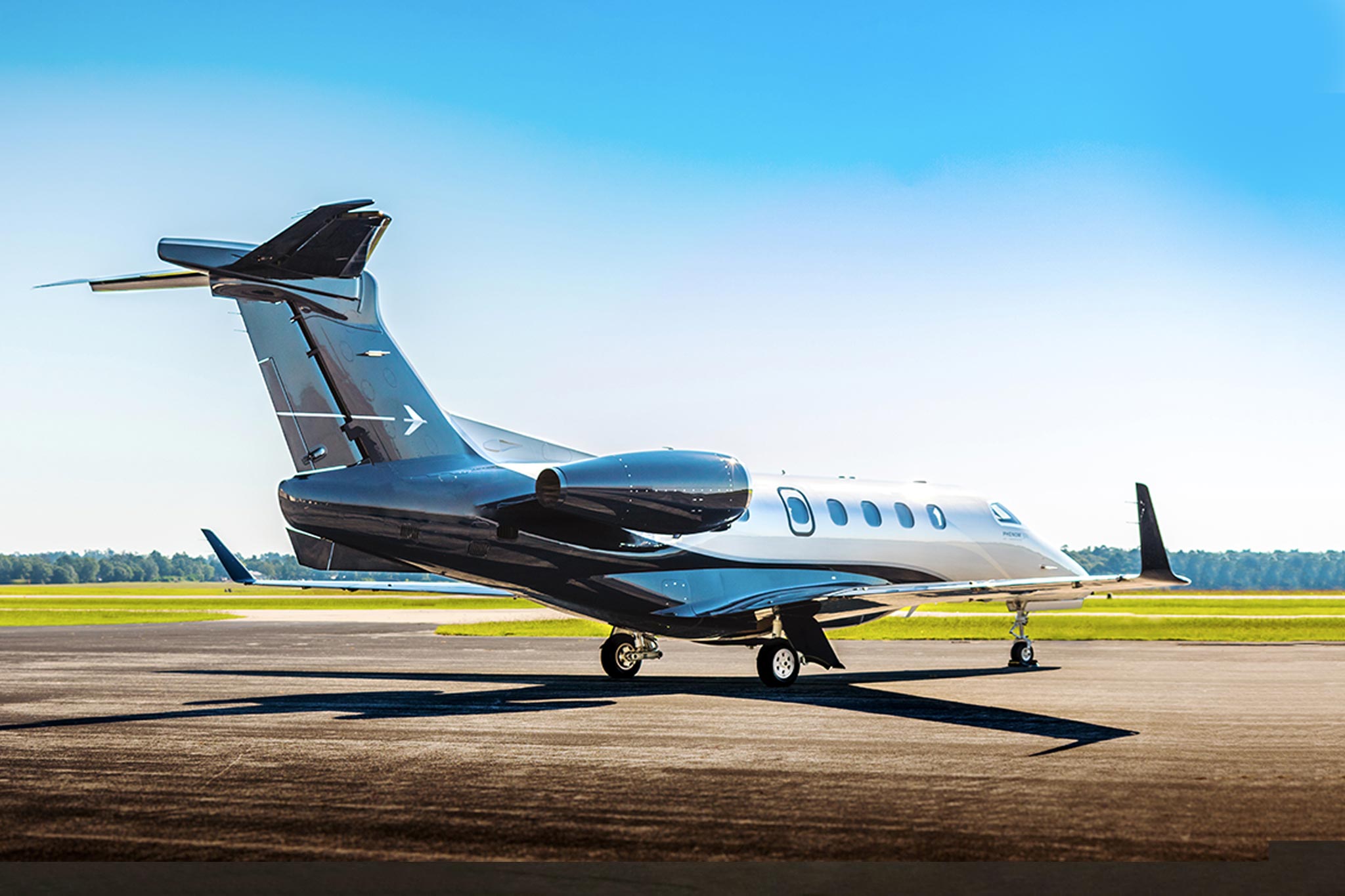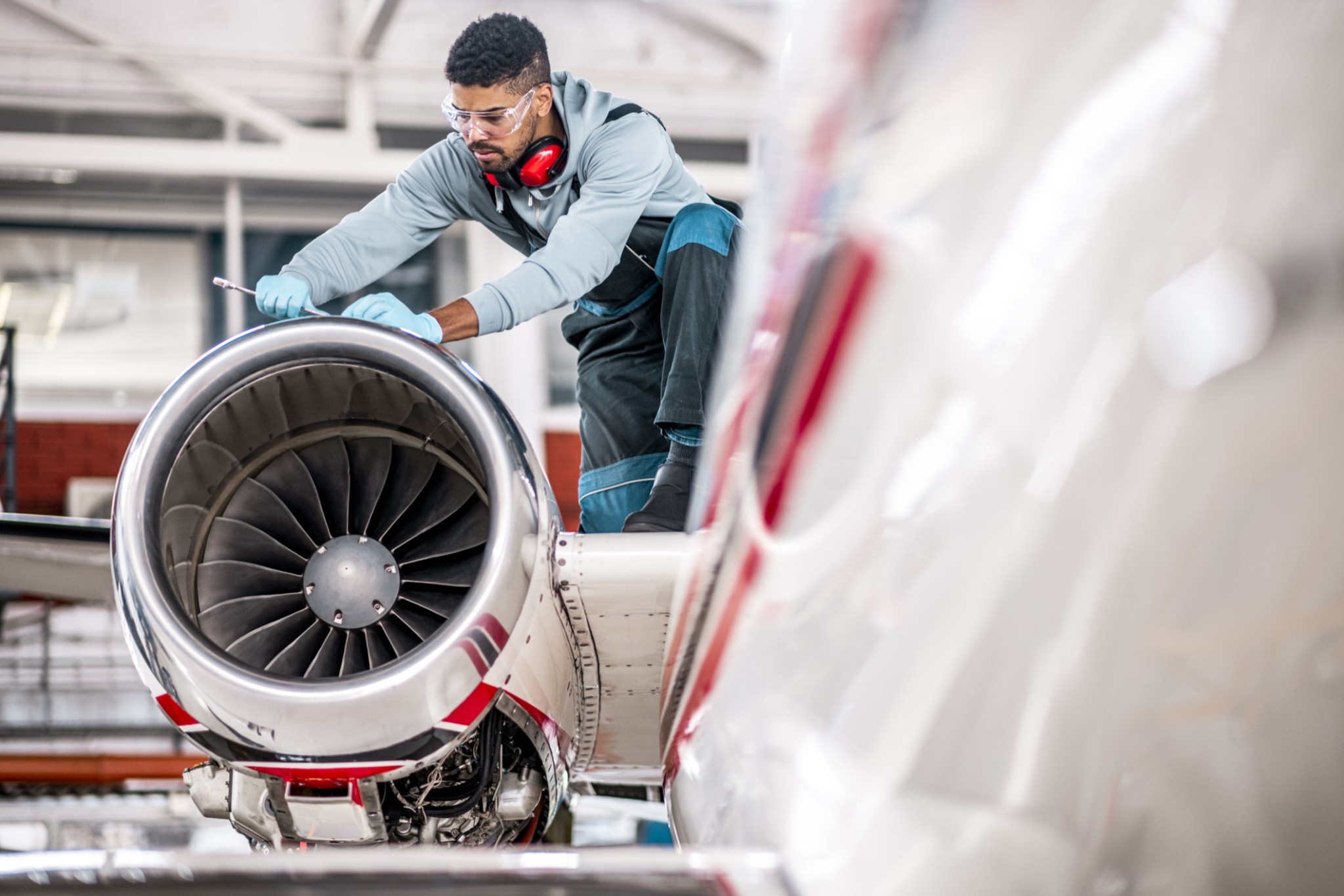
From Cirrus To Citation
Date
June 9, 2009JetAviva puts its clients into the left seat of light jets
By Jessica Ambats. Photos By Jessica Ambats
 Through my Lightspeed Zulu headset, I hear a confident voice: “Denver Center, Citation One Three Zulu Mike, vacating flight level 390 for 240, smooth ride.” Our descent into Aspen marks the conclusion of a 703 nm, tailwind-blessed trip from Santa Monica, Calif., and aside from a 2,000-foot marine layer cloaking the Los Angeles Basin, we haven’t encountered any weather-until now. It’s IMC with moderate chop, and through breaks in the clouds loom the snowy peaks of the rugged Colorado Rockies.
Through my Lightspeed Zulu headset, I hear a confident voice: “Denver Center, Citation One Three Zulu Mike, vacating flight level 390 for 240, smooth ride.” Our descent into Aspen marks the conclusion of a 703 nm, tailwind-blessed trip from Santa Monica, Calif., and aside from a 2,000-foot marine layer cloaking the Los Angeles Basin, we haven’t encountered any weather-until now. It’s IMC with moderate chop, and through breaks in the clouds loom the snowy peaks of the rugged Colorado Rockies.
Standard traffic pattern at KASE, which sits at an elevation of 7,820 feet on the southern end of a valley surrounded by 14,000-foot mountains, calls for aircraft to land on runway 15 and depart on 33.
But, today, winds are 310 at 18 knots, gusting to 28, so after requesting a circle-to-land approach on 33, tower clears our Citation Mustang for the circle. Swooping ski trails and majestic homes dot the white and green landscape below, but although I’m the passenger on this flight, it’s hard not to notice the large mountain in front of us as we turn right base. “Pull up,” commands the G1000 TAWS system. “Pull up!”

Marty Sprinzen (right) and one of his aviation mentors, Cyrus Sigari (left) of JetAviva.
Single-pilot jet operations in mountainous terrain at a high-elevation airport flying a nonstandard traffic pattern in turbulence isn’t for the faint of heart. Throw in a screaming terrain alert, and it’s enough to rattle the staunchest nerve. But my left-seater keeps his composure and, on final, methodically states, “In a position to land, flaps to landing,” and maintains 94 knots over the numbers, extra airspeed for the gusty conditions.
Our touchdown is as smooth as any flown by a high-time professional pilot. But I’m not with one. I’m with Marty Sprinzen, who at age 57, embarked on his childhood dream of becoming a jet pilot. Until three years ago, he hadn’t even logged his first private pilot training flight; today, he jet-sets between homes in Los Angeles, Aspen and New York. How did he get here?
 Single-pilot jet operations in mountainous terrain at a high-elevation airport flying a nonstandard traffic pattern in turbulence isn’t for the faint of heart.
Single-pilot jet operations in mountainous terrain at a high-elevation airport flying a nonstandard traffic pattern in turbulence isn’t for the faint of heart.Created by Cyrus Sigari and Ben Marcus in 2006, JetAviva is an innovative company that assists pilots with every aspect of owning and flying a light jet. The team has completed over 125 light-jet transactions and is able to offer objective advice while ensuring a hassle-free experience for customers.
“Our clients typically fall under one of two categories,” says Sigari. “They’re either retired, self-made business owners whose lifelong ambition has been to own and operate a light jet, or they’re principals of medium to large businesses who use their aircraft extensively for the betterment of their business. The aircraft they’re stepping up from range from Cirrus SR22s and Cessna Corvalises to TBM 850s and King Airs.”
“It doesn’t take superhuman skill to fly a light jet,” says Marcus. “But it does take a tremendous investment in time, money and emotion.” In 2000, a merger took place between Forte, a publicly traded software development company that Sprinzen founded, and Sun Microsystems, which valued Forte at $1.2 billion. “I was just in the right place at the right time,” shrugs the Cooper Union graduate.
 After soloing in a Cessna 172, he purchased a Cirrus SR22. “JetAviva set me up with two mentors, Craig Byrd and J. Robert Moss,” says Sprinzen. “Mossy taught me how to fly a jet single-pilot in the real world. I’ve learned intimate details about the aircraft and its systems and the best techniques for operating my Mustang in different environments. JetAviva developed my maturity as a pilot in a way that I couldn’t have done on my own.”
After soloing in a Cessna 172, he purchased a Cirrus SR22. “JetAviva set me up with two mentors, Craig Byrd and J. Robert Moss,” says Sprinzen. “Mossy taught me how to fly a jet single-pilot in the real world. I’ve learned intimate details about the aircraft and its systems and the best techniques for operating my Mustang in different environments. JetAviva developed my maturity as a pilot in a way that I couldn’t have done on my own.”
JetAviva provides all of the services necessary to determine which type of light jet is best for a particular client. The company teaches the pilot how to fly his or her new jet and place it into service. Specialized services include an 800-point ground inspection and test flight on the day of delivery as well as a jet-familiarization training program. The company also offers aircraft acquisition consulting and assistance with the sale of a previously owned aircraft. (When Sprinzen was signed off in the Mustang and was reluctantly ready to let go of his SR22, all he had to do was sign the final sales paperwork; JetAviva took care of the rest.)
 We’re sitting at the one restaurant that’s open for Sunday lunch during pre-ski season in downtown Aspen, reminiscing about the morning’s flight. Sprinzen is giddy with excitement and texts friends with the proud news of the challenging circle-to-land accomplishment. The guy at the next table overhears the buzz: “You own a jet?” Sprinzen’s eyes brighten, and it’s as though the little boy from Brooklyn is here: “I flew myself here in it!”
We’re sitting at the one restaurant that’s open for Sunday lunch during pre-ski season in downtown Aspen, reminiscing about the morning’s flight. Sprinzen is giddy with excitement and texts friends with the proud news of the challenging circle-to-land accomplishment. The guy at the next table overhears the buzz: “You own a jet?” Sprinzen’s eyes brighten, and it’s as though the little boy from Brooklyn is here: “I flew myself here in it!”
Sprinzen is a prime example of how JetAviva can make jet dreams come true; a vision that Sigari and Marcus are passionate about. The best friends immersed themselves in aviation at the age of 12, both studied aviation-related fields, and while working for Eclipse, came up with the idea to start JetAviva. “Ben and I are 26 years old,” says Sigari. “By no stretch are we veterans in the business; however, we believe in three key tenets: have fun, take care of every customer as if they were the last, and be the best at what we do. One of the unique aspects of our business is that all of our clients are fantastically successful people, both in business and in their personal lives. We spend a lot of time with our clients, and as a result, we learn a lot from them. We take the golden nuggets that we’ve seen help our clients, and try to apply them to our business and personal lives as well.”
Our flight home from the Colorado Rockies the following day is uneventful. Today, Sprinzen is a far cry from where he was a year ago, overwhelmed during the training process. “I’m a perfectionist, and when I get into something, I get into something,” he says. “I like the challenge of knowing something like the G1000 system really well, and making it do what I want, such as fly across the country. There were times when I was ready to give up, but now I love my Mustang and I wouldn’t want to trade it for anything.
“The first time alone in the Mustang felt like my first solo flight all over again,” the new jet pilot continues. “I was extremely focused for takeoff and climb, and then once established at cruise, I looked around the cockpit and cabin. I thought to myself, ‘I’m alone in a jet at flight levels. Wow!'”
Top 5 Ways To Ease The VLJ TransitionBy Cyrus Sigari
 It was three o’clock on a Thursday afternoon when my cell phone began to ring. A friend, J.B., had just finished his third day of simulator training for his new VLJ. I knew what was coming. I could sense it before I even answered the phone. “Cyrus, I can’t do this…this is too hard.” I sat and listened to J.B. talk about why he should quit training, sell his plane and come home.
It was three o’clock on a Thursday afternoon when my cell phone began to ring. A friend, J.B., had just finished his third day of simulator training for his new VLJ. I knew what was coming. I could sense it before I even answered the phone. “Cyrus, I can’t do this…this is too hard.” I sat and listened to J.B. talk about why he should quit training, sell his plane and come home.
Transitioning to a VLJ is a humbling experience. If you’re considering the transition, know that there will probably be a moment when you too will want to give up. This is normal. If the transition is approached correctly, however, a transitioning VLJ owner-pilot won’t have to make the kind of call J.B. made to me.
Having helped dozens of individuals make the transition to one VLJ or another, I know that a smooth and fun transition can be had, but only with thoughtful, realistic planning and, more importantly, the right attitude.
1) Choose the right mentor. Too often, mentors come to the aid of newly transitioning VLJ owner-pilots after they’ve received a type rating. For a mentor to be truly helpful, the person should be brought in well before the transition process begins in order to help sculpt the transition plan. A mentor serves many roles: planner, coach, disciplinarian, adviser, teacher, friend and therapist. That’s right-a therapist. You need somebody to talk to when you hit the point in your transition when you think, “There’s just no way I can do this.” The most important questions to ask yourself about a prospective mentor are: 1) Can I learn from this person, and 2) Does he or she have the experience required to teach me? You also need to get along with the person. If you can’t readily communicate, there won’t be any learning. Is the person enthusiastic about your flying success? Does he or she love teaching? Does the person know the techniques required to safely fly a single-pilot jet? Interview a few prospective mentors before making a decision. Pick the one who’ll best help you develop the judgment and decision-making skills to successfully fly your VLJ.
In addition to a mentor, you need to get a support network behind you. This is an important step in the transition process. It’s now very easy to find a support network through online owners groups. There’s an owners group for each VLJ type flying today; for example, there are groups for the Embraer Phenom 100 (www.jetbrief.com), the Cessna Citation Mustang (www.citationjetpilots.com) and the Eclipse 500 (www.eclipse500club.org), to name a few.
2) Understand what’s expected of you. Per the Federal Aviation Regulations, any turbojet requires the pilot in command to hold a type rating. In most cases, a type rating can be earned either in the airplane with a designated pilot examiner or through a Part 142 simulator-based training facility, such as FlightSafety International or CAE SimuFlite. Most insurance companies require owner-pilots to successfully complete a simulator course before they’ll be insured. In either case, to successfully pass a type-rating program, you must pass a thorough checkride to Airline Transport Pilot (ATP) Practical Test Standards. Even if you hold a private pilot certificate, you’ll be tested to the highest standards. Most of the Practical Test is focused on the applicant’s instrument-proficiency skills. Part of your transition plan should focus on demonstrating fine-tuned instrument skills prior to arriving at a type-rating school. This can be done at your local flight school or with a trusted CFI. Under no uncertain terms should you arrive for your type-rating course without having polished up on your instrument skills beforehand.
3) Been there, done that. By far, the most effective way to ensure a smooth transition into a VLJ is to build time in type prior to beginning the type-rating process. This can be done in two ways. The first assumes that you take delivery of your jet before going to training. After taking delivery, work with a mentor in your jet before you go to type-rating school. The amount of time spent training beforehand varies from applicant to applicant, but on average, 15 to 30 hours of real-world experience in the jet can make a world of difference. If early delivery of your plane isn’t an option, there are a number of companies that offer Phenom 100, Mustang or Eclipse aircraft for rent, enabling you to build experience with an instructor.
4) Be honest. Be truthful about where you are, and where you need to go. Fly with your mentor to get a sense of how much work you need. For most people, the biggest areas for improvement include checklist usage, autopilot and flight management system (FMS) usage, performance calculations and instrument proficiency. Once your mentor has the opportunity to assess your level of proficiency in the above categories and your previous flying experience, the person can help you lay out a comprehensive plan of action to get you type-rated.
5) Have fun! The challenge of owning and flying a VLJ is likely one of the principal reasons why so many people have chosen to take on the task. Making the transition should be an enjoyable experience. It should never turn into a burden. If it has, you should reevaluate your transition plan immediately – it’s likely there was a wrong turn made somewhere along the line.



